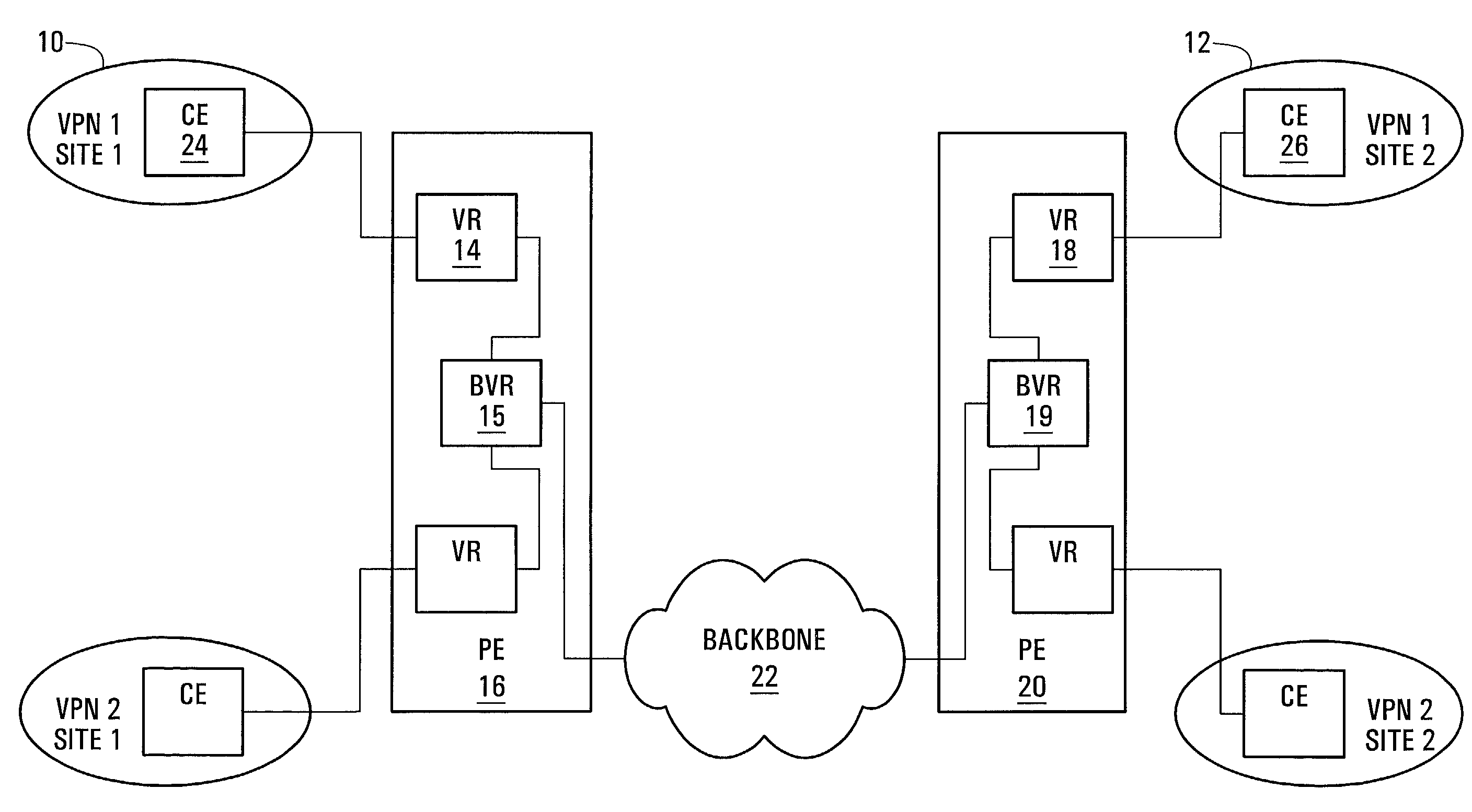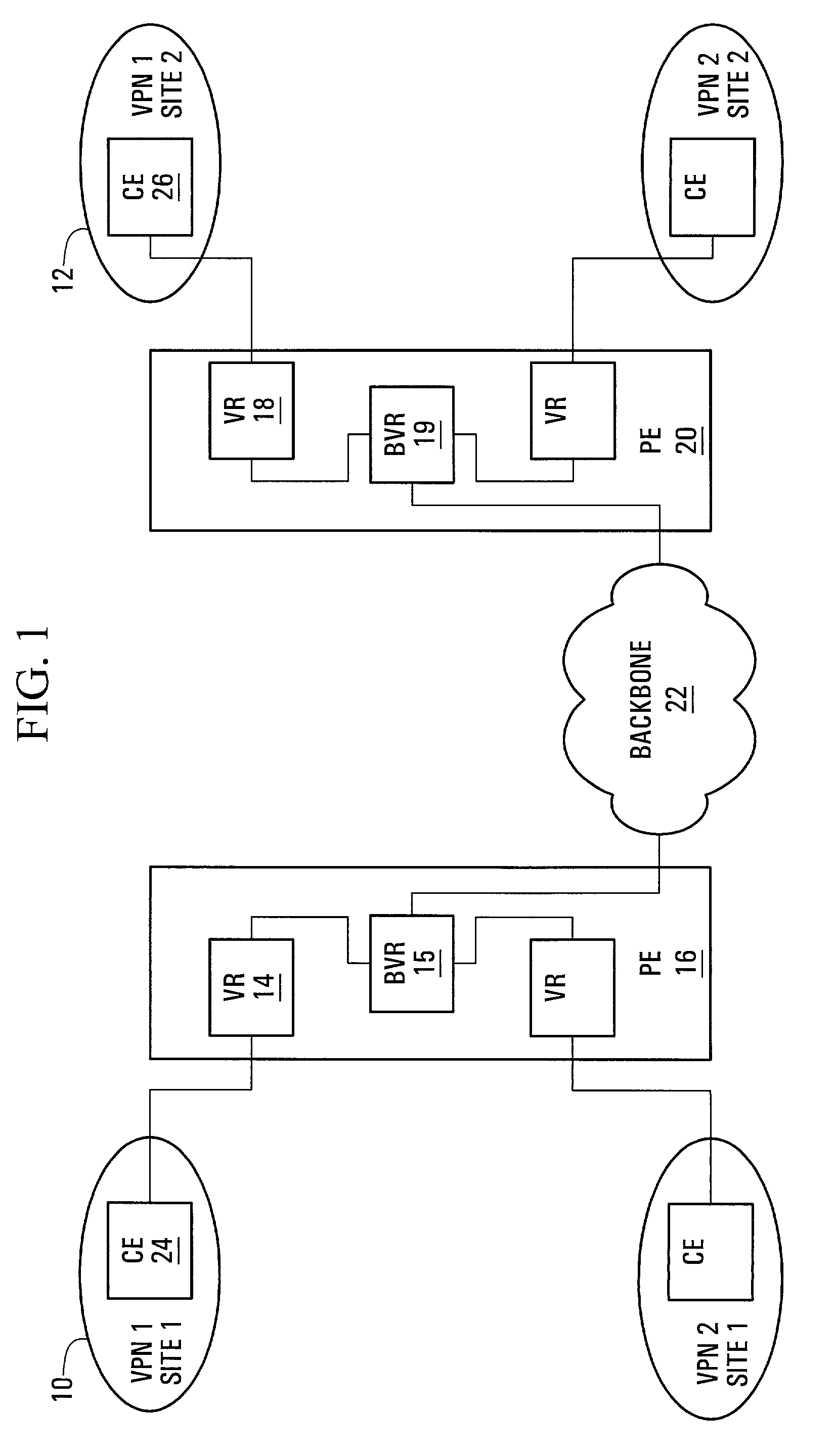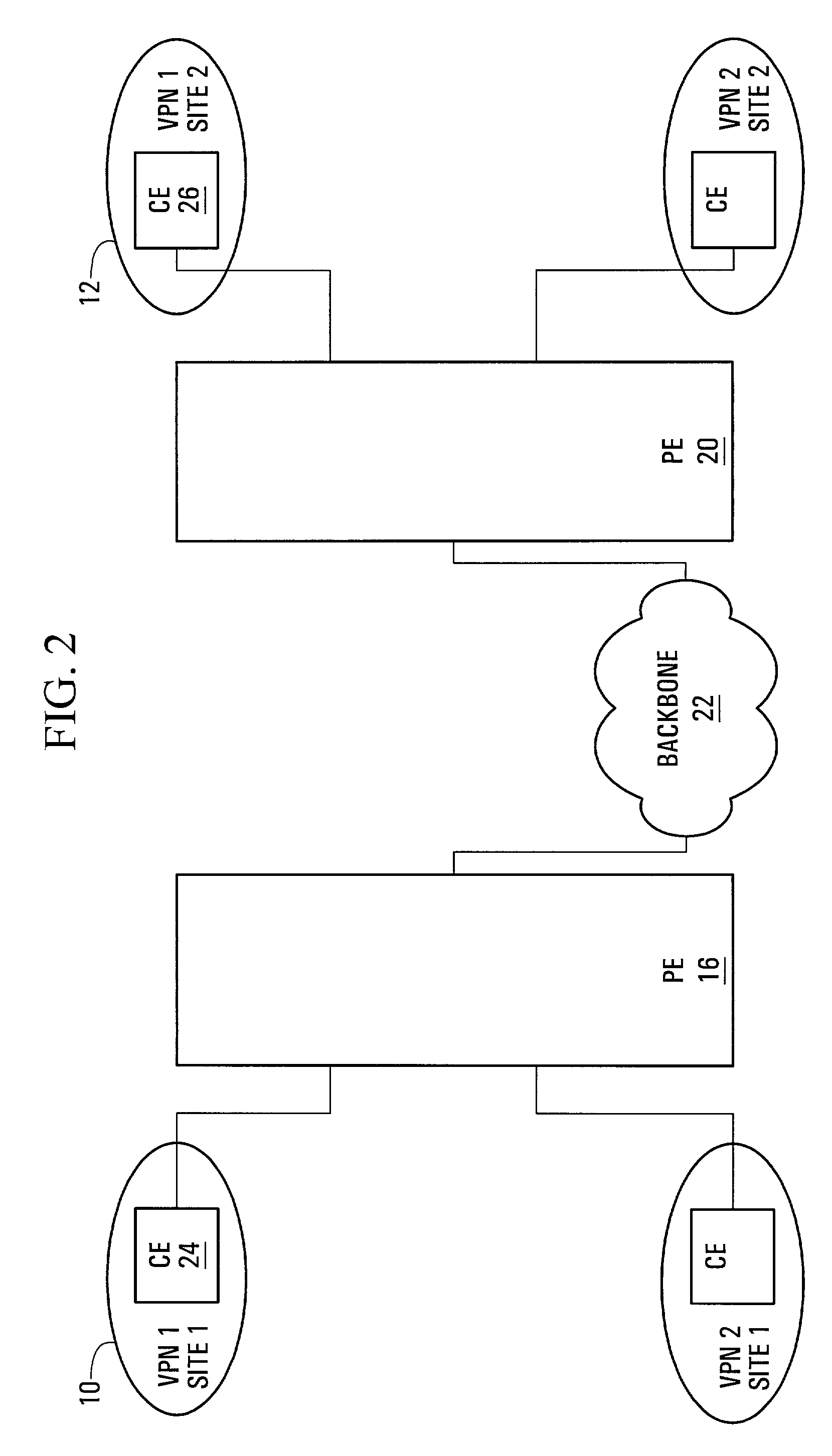Piggybacking VPN information in BGP for network based VPN architectures
a network-based vpn and information technology, applied in the field of communication systems implementing network-based virtual private networks, to achieve the effect of saving costs
- Summary
- Abstract
- Description
- Claims
- Application Information
AI Technical Summary
Benefits of technology
Problems solved by technology
Method used
Image
Examples
Embodiment Construction
[0018]Referring to FIG. 1, a network based Virtual Private Network (VPN) implemented using a Virtual Router (VR) model within a communication system is shown. Two private networks, a first private network being located at a first site 10 and a second private network being located at a second site 12, are operated by a customer who wishes to establish a VPN to connect both private networks. Hosts at the first site 10 are connected, either directly or indirectly via other hosts within the first site, to a first Customer Edge (CE) device 24. A CE device may be a router, a switch, or, if the private network to which the CE device belongs is a single host, a host. Hosts at the second site 12 are connected, either directly or indirectly, to a second CE device 26. The first CE device 24 is connected to a first VR 14 over an access link, and the second CE device 26 is connected to a second VR 18 over another access link. The first VR 14 is located within a first Provider Edge (PE) device 16...
PUM
 Login to View More
Login to View More Abstract
Description
Claims
Application Information
 Login to View More
Login to View More - R&D
- Intellectual Property
- Life Sciences
- Materials
- Tech Scout
- Unparalleled Data Quality
- Higher Quality Content
- 60% Fewer Hallucinations
Browse by: Latest US Patents, China's latest patents, Technical Efficacy Thesaurus, Application Domain, Technology Topic, Popular Technical Reports.
© 2025 PatSnap. All rights reserved.Legal|Privacy policy|Modern Slavery Act Transparency Statement|Sitemap|About US| Contact US: help@patsnap.com



